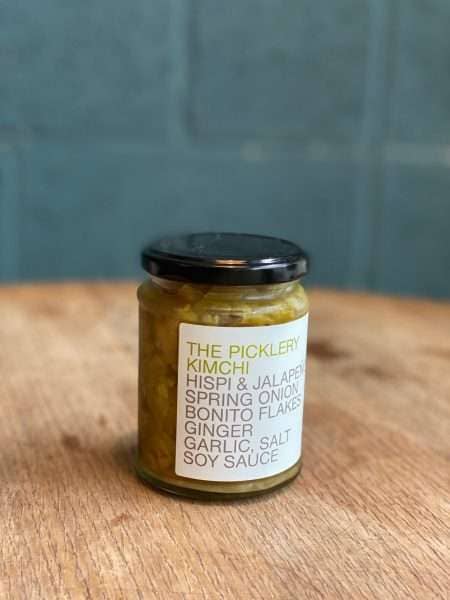This post started out as just a simple, quick recipe for kimchi, as I felt the blog was missing one. And then of course, it mutated…
Long, long, long ago we ate at Dalston’s Little Dick, The Picklery; it is still one of the best meals we’ve both ever eaten. Every small dish, new, exciting, fresh, tinglingly different. Angels danced on our tongues. One of those nights that I hope we’ll all be able to recapture at some point.
This was back when the very excellent Thom Eagle was still cooking there. He’s now concentrating on his writing and you should definitely keep an eye on this (& support him) via his Patreon and grab both his books: they’re not your usual, conveyer-belt produced, frankly boring, collection of ‘cooking by rote’ recipes. Both are very much about Thom’s philosophy, about thinking about the preparing of your food, about life in general. Maybe even of mindfulness if that concept’s not been too corrupted by the influencers (a plague on all their houses, verily unto the 10th generation). Highly recommended. There are some recipes of course, but both books repay re-reading, like a novel rather than a manual.

They sit within easy reach on one of the shelves next to where I’m typing this quick piece now:

Little Dick are closed now of course, because of the ‘Rona, but the team there still offer some great pickled & fermented options, inc. their daikon or hispi kimchis.

If you can’t find them there, both FarmDrop and Natoora seem to still have stock and allow you to buy from them online. Both great suppliers, so if you haven’t signed up with them already, you know what to do…
OK, and what about a recipe? I don’t have the one they use at Little Duck; but then kimchi is open to some experimentation anyway. And, if you ignore Tom’s counsel, where he “cautions against the desire to try & make everything yourself whilst acknowledging how seductive the lure to do so is” and instead go ahead and decide to make it yourself, then this one I use isn’t too shabby.
Ingredients:
1 medium sized Chinese leaf cabbage (or use similar quantities of hispi or daikon root)
100g Maldon sea salt
75g caster sugar
10 garlic cloves; chop finely
50g peeled ginger; sliced & finely chopped
50g Korean chilli powder
50g tinned anchovies, drained and chopped
50ml light soy sauce
50g jarred salted shrimps (called Saeu-jeot 동백하 새우젓 when you’re shopping)
100g spring onions, cut into 2cm batons
100g carrots, cut into thin, short strips
Process:
1 If you want, discard any egregiously wilted or damaged leaves (for compost). Cut the cabbage in half lengthwise and then cut these halves across into pieces roughly 2cm in size.
2 Squish the cabbage in a bowl along with the salt and 15g of sugar making sure you coat everything. Cover; leave overnight in your fridge or anywhere cold.
3 Throw the garlic, ginger, chilli powder, anchovies, soy sauce, salted shrimps & remaining sugar into a blender, along with 50ml of water. Mash it all into a smooth paste and transfer to a bowl, stirring in the spring onions and carrots.
4 Locate your cabbage. Take the paste mixture and — using your hands — add generously to each layer of cabbage, making sure every piece gets some love & it’s all melded together.
5 Pack the result into a plastic lidded container or, if you want to store for longer (which you should!) squish it down into Kilner jars instead.
Leave the kimchi to ferment at room temperature. Although it’ll be edible after just 24 hours, it’ll be pretty underwhelming, so be patient, leave it, wait and it will only continue to improve as the weeks go by. if you’ve sued a sealed container, you’ll probably need to ‘burp’ it daily as the CO2 fermentation pushes out bubbles. Use your own taste buds to tell you when it’s at the optimum, for you. Kimchi will pretty much last for ever, changing in both texture and flavour as it ages. Some of you out there will prefer a young kimchi, crunchy, bright. Others will have the patience to wait for theirs to magically alchemise into a delight that is deeply aged, soft, funky, writhing with lactobacillus & fizzing gently. Go on, try it. Tell me when your optimum kimchi age is.
This is mine…
